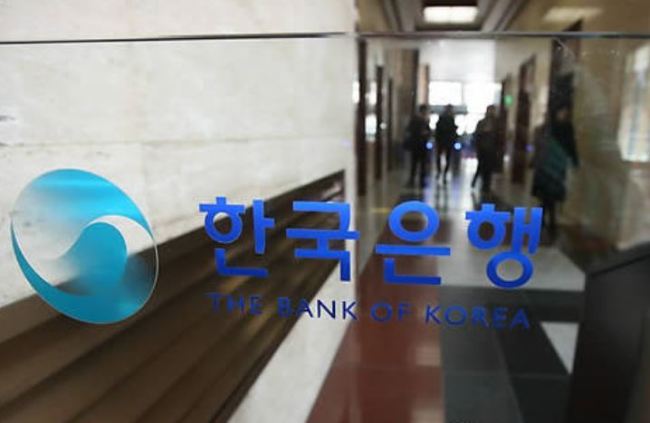Full text of BOK's statement on monetary policy decision for Aug.
By YonhapPublished : Aug. 31, 2018 - 11:02

The following is the full text of the Bank of Korea's statement on its monetary policy decision for August. The central bank's monetary policy board decided Friday to hold its base rate steady at 1.5 percent for the month.
-----------------
The Monetary Policy Board of the Bank of Korea decided today to leave the Base Rate unchanged at 1.50 percent for the intermeeting period.
Based on currently available information the Board considers that the global economy has continued its robust growth. In the global financial markets, some emerging market economies with weak external soundness have seen unease again, including capital outflows and sharp depreciations of their currencies. Looking ahead the Board sees global economic growth as likely to be affected by factors such as the movements toward spreading trade protectionism, the paces of monetary policy normalization in major countries, and the directions of the US government's economic policies.
The Board judges that the solid trend of domestic economic growth has continued, as consumption and exports have shown favorable movements although the adjustments in facilities and construction investment have persisted. Employment conditions have become more sluggish, with the extent of increase in the number of persons employed having lessened significantly. Going forward the Board expects domestic economic growth to be generally consistent with the path projected in July and sustain a rate at its potential level. It anticipates that investment will slow but that the trend of steady increase in consumption will continue, and that exports will also sustain their favorable movements thanks to the buoyancy of the global economy.
Consumer price inflation has remained at the mid-1 percent level as the increases in service fees and agricultural product prices have slowed, despite the accelerating pace of increase in the prices of petroleum products. Core inflation (with food and energy product prices excluded from the CPI) has fallen to the 1 percent level, and the rate of inflation expected by the general public has been in the mid- to upper-2 percent range. Looking ahead it is forecast that consumer price inflation, after remaining in the mid-1 percent range for some time, will pick up and gradually approach the target level. Core inflation will also gradually rise.
The domestic financial markets have been generally stable. Long-term market interest rates have fallen, affected by the financial unease in some emerging market economies and the sluggishness of employment. Stock prices had declined, due mainly to concerns about the US-China trade dispute, but have since rebounded as these concerns have eased somewhat. The Korean won-US dollar exchange rate has fluctuated in line with changes in the value of the dollar globally. Household lending has sustained its higher rate of expansion than in past years, although the amount of its expansion has lessened somewhat. Housing sales prices have remained steady overall, but have risen rapidly in some parts of Seoul and its surrounding areas.
Looking ahead, the Board will conduct monetary policy so as to ensure that the recovery of economic growth continues and consumer price inflation can be stabilized at the target level over a medium-term horizon, while paying attention to financial stability. As it is forecast that inflationary pressures on the demand side will not be high for the time being, while the domestic economy is expected to continue its solid growth, the Board will maintain its accommodative monetary policy stance. In this process it will judge carefully whether it is necessary to adjust its accommodative monetary policy stance further, while closely checking future economic growth and inflation trends. It will also carefully monitor conditions related to trade with major countries, any changes in the monetary policies of major countries, financial and economic conditions in emerging market economies, the trend of increase in household debt, and geopolitical risks.








![[KH Explains] Hyundai's full hybrid edge to pay off amid slow transition to pure EVs](http://res.heraldm.com/phpwas/restmb_idxmake.php?idx=644&simg=/content/image/2024/04/18/20240418050645_0.jpg&u=20240419100350)







![[From the Scene] Monks, Buddhists hail return of remains of Buddhas](http://res.heraldm.com/phpwas/restmb_idxmake.php?idx=652&simg=/content/image/2024/04/19/20240419050617_0.jpg&u=20240419175937)

![[KH Explains] Hyundai's full hybrid edge to pay off amid slow transition to pure EVs](http://res.heraldm.com/phpwas/restmb_idxmake.php?idx=652&simg=/content/image/2024/04/18/20240418050645_0.jpg&u=20240419100350)

![[Today’s K-pop] Illit drops debut single remix](http://res.heraldm.com/phpwas/restmb_idxmake.php?idx=642&simg=/content/image/2024/04/19/20240419050612_0.jpg&u=)